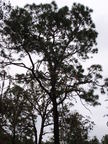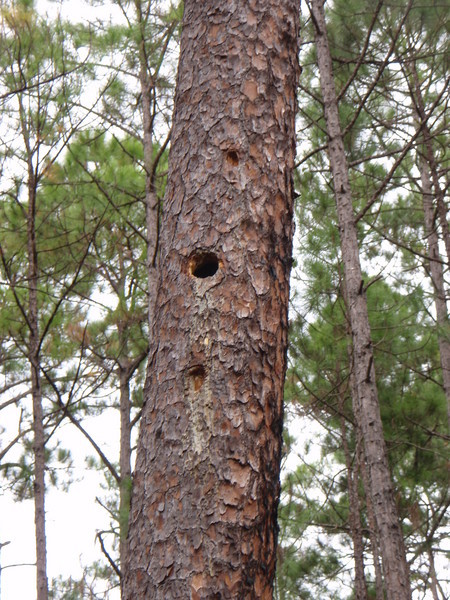The other day somebody asked me to recommend some books
about longleaf forests, how they used to be, what happened to them,
what can be done now.
I was going to start by posting a short list, but each item was
turning into a review, so I’ll just post them one by one as reviews.
 Ecology of a Cracker Childhood (The World As Home),
by Janisse Ray.
Ecology of a Cracker Childhood (The World As Home),
by Janisse Ray.
How dirt poor crackers and corporate greed destroyed most of the most diverse
ecosystem in North America; yet these same people are the tragic
heroes of the book.
Half autobiography, half ecology, this book will either get you with
Janisse’s “stunning voice” or you won’t get it.
If you’re from around here, you’ll hear the wind in the pines, feel the breeze, and see the summer tanagers yellow in the sun.
If you’re not, here’s your chance to meet a “heraldry of longleaf”
up close and personal.
“I will rise from my grave with the hunger of wildcat, wings of kestrel….”
See
Janisse read in Moultrie. “More precious than handfuls of money.”
See her
wikipedia page
for a pretty good bio.
But read the book.
 If nothing else, you’ll never think the same again about Amazon
deforestation once you realize we already did that to ourselves,
and in the south we live in the devastated remnants of what was
one of the most extensive forests on earth, with longleaf pine trees
100 feet tall and 500 years old, maintained by fire, protecting everything from the Lord God bird to the lowly Bachman’s sparrow, from the rattlesnake-eating indigo snake to the beetles that live in gopher tortoise burrows.
The forest can return,
because reforestation can pay.
Meanwhile, there are still places
where you can see how it used to be.
Janisse Ray had a lot to do with preserving Moody Forest, too,
but that’s another story.
If nothing else, you’ll never think the same again about Amazon
deforestation once you realize we already did that to ourselves,
and in the south we live in the devastated remnants of what was
one of the most extensive forests on earth, with longleaf pine trees
100 feet tall and 500 years old, maintained by fire, protecting everything from the Lord God bird to the lowly Bachman’s sparrow, from the rattlesnake-eating indigo snake to the beetles that live in gopher tortoise burrows.
The forest can return,
because reforestation can pay.
Meanwhile, there are still places
where you can see how it used to be.
Janisse Ray had a lot to do with preserving Moody Forest, too,
but that’s another story.
-jsq
 With appearances by
Moody Forest and people from there and from the
Longleaf Alliance, not to mention
gopher tortoises and indigo snakes:
With appearances by
Moody Forest and people from there and from the
Longleaf Alliance, not to mention
gopher tortoises and indigo snakes:


